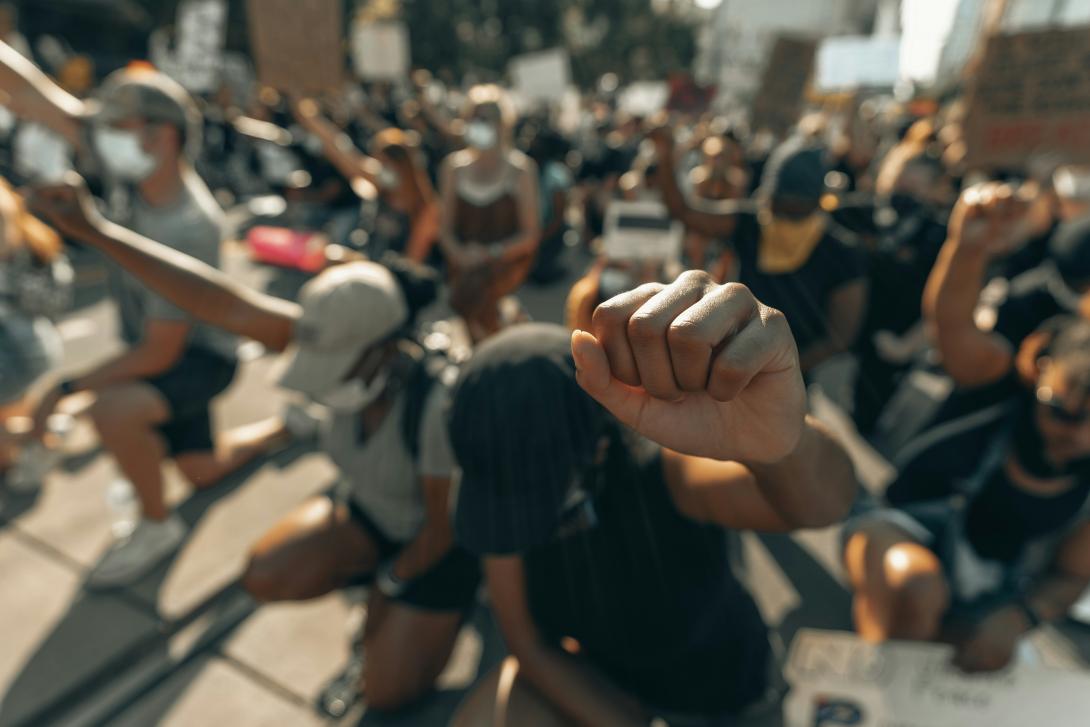“The Living Dead”: A Necropolitical Lens of Higher Education’s Institutionally Sanctioned Violence against Black and Brown Student Leaders

In 2020, amidst the global reckoning with racial injustice and the rise of the Black Lives Matter (BLM) movement, eleven Black and Brown student leaders stood the forefront of change at their predominantly white institution (PWI) urging administration to act. Their actions led to a list of changes that universities can follow to begin addressing racial equity on campus. These suggestions echoed by previous generations included increased representation among faculty hires, expanding policies and procedures for racial incidences on campus, and sensitivity training. Years later, even with a direct outline, many of these changes have yet to materialize. As such, we consider their activism, courage, and leadership through the lens of Mbembe’s (2003) Theory of Necropolitics, to remind institutions and those in higher education that student voices should never go unheard. After all, students are the consumers upon which higher education exists, and their experiences should be a driving force of change.
In short, Mbembe’s theory posits how power dictates not only who experiences life or death, but also how certain bodies—particularly Black and Brown—are subjected to conditions of exclusion and precarity. For these student leaders, their leadership journey within higher education during the height of BLM protests illustrates the necropolitical nature of academic institutions: spaces where Black and Brown students are symbolically "included" yet perpetually placed at the margins, their struggles rendered invisible, and their futures subject to the whims of institutional performativity. These institutions may offer life in the form of scholarships, platforms, and committees, but they simultaneously deal death through exclusion, marginalization, and the failure to uphold genuine commitments to racial equity despite outside pressure.
The Necropolitical Landscape of Higher Education
These student leaders took on roles in university racial justice task forces, diversity committees, and campus-wide discussions -- they were thrust into spaces where their labor was exploitative. Their voices were called upon to provide legitimacy to diversity initiatives, but they quickly found that their presence was more ornamental than transformative. One student leader reflected upon “student leadership being both a blessing and a curse.” He noted that the “curse comes in the sense that once you show yourself to be a student leader…they tap on your shoulder a whole lot.” He stated that students “were on calls from 9-5 Monday thru Friday the entirety of summer 2020 you know. And that was just with us meeting with administrators, coming up with proposals and ideas, watching [for] follow through, meeting with new ideas on how we could meet the moment. So that is a burden.”
While the student leaders worked tirelessly to represent the Black and Brown student body’s interests and ensure their demands were heard—pushing for increased recruitment and retention of students of color, diversified faculty, and an inclusive curriculum—they were continually met with institutional inertia. One student leader recalled a meeting in which she met with a high-level administrator who was soliciting feedback from students of color to address campus issues related to diversity and equity and explained that while her voice was being heard in this forum, the administrator's response was all about protecting the University’s “brand” rather than a true commitment to student needs. Another student leader stated “What will the Board say?... we felt like administrators were willing to listen, but the hold-up was always how is the Board going to react to it which is unfortunately just how higher education goes in the country.” This aligns with the necropolitical reality of higher education: the illusion of participation masked the very real experience of disempowerment.
The Management of Black and Brown Bodies
For these eleven student leaders, activism within the institution became a double-edged sword. On the one hand, they were celebrated as leaders of a new era, the "face" of the institution’s response to racial injustice. On the other, they were continually burdened by the expectation to educate, to perform emotional labor, and to act as intermediaries between Black and Brown students and the administration. A student leader highlighted, “We’re just tired, you know? Sometimes, the last thing you want to do is explain it to somebody else. Other student leaders were left questioning, “How do we convey what we’re seeing, what we’re feeling, and our truth to them when they [higher education] operate from a paradigm that is very different from our own?” In this sense, they became hyper-visible yet structurally powerless—a reflection of Mbembe’s argument that the politics of life and death are about the management of bodies.
In a necropolitical system, those on the margins are often subjected to a slow death, not through overt violence, but through the systematic withdrawal of care, opportunity, and resources. The student leaders’ calls for action were met with publicly shared reports and myriad committees and task forces that ultimately lacked power. Their recommendations were diluted in considerations of enactment, and the promises of change made by the institution failed to materialize into sustained, structural reform. In this way, the institution managed their presence—allowing these students to exist, to speak, and to struggle, but always within a confined space that prevented real disruption.
Performative Equity
Three years after the BLM protests, the grand promises of 2020 have largely gone unfulfilled. While diverse faculty hires were made, there was limited faculty retention to support student requests for increased representation. Universities across the country, including their own, have seen sharp declines in enrollment rates among Black and Brown students. These students, who once believed in the promises of racial equity, now view the institution’s actions as largely performative. The performative commitments made by the institution created an illusion of care and solidarity, yet the lived experience of these student leaders was one of constant exhaustion, disillusionment, and symbolic violence. A student leader verified, “I felt like there was just a lot of performative actions... at times, they did things that were like ‘Oh yes, this is what we're doing to address diversity’...but when I look back on it, I'm like what were the big changes that I saw on campus over the big things done differently? I unfortunately can't say that I saw a lot of major changes.” The rhetoric of inclusion and diversity has not translated into actual policy or practice change. Instead, it served as a means of control, a necropolitical tool that maintained the power structures of the institution while offering symbolic gestures of life.
The necropolitics of higher education dictate that these students are perpetually at risk of being ‘discarded’ once they are no longer useful for institutional optics. This is reflected in the declining retention rates, where promises of belonging have fallen flat, and the reality of alienation has set in. The performative nature of these promises served to pacify and neutralize the urgency of these racial justice efforts made by students. One student leader stated that “the conversation of race is something that's like hurricane season, it comes, and then it goes, and then we don't talk about.” Institutions have not fully reckoned with their complicity in maintaining structures that perpetuate inequality. In this necropolitical state, diversity becomes a product to be marketed, and the lives of Black and Brown students are co-modified without true liberation.
The slow erosion of these students’ hopes, the symbolic violence of unmet promises, and the performative gestures of inclusion reflect the necropolitical operations at play within higher education. As higher education continues to grapple with the fallout of the 2020 racial justice movement, it must confront its necropolitical legacy. Will these institutions continue to wield power over the futures of Black and Brown students, offering them a seat at the table without real influence? Or will they finally relinquish the necropolitical grip and embrace a vision of education that is truly diverse, equitable, and inclusive? Students have already outlined their needs, which again, cry for increased representation on campus, expansion of policies and procedures to address racial incidences and create a sense of intentional belonging on campus through sensitivity awareness and training. Now, it’s just a matter of universities following through on their support for racial equity as previously espoused. The burden should no longer be on students to address change, it should be the responsibility of higher education to enact these changes if their hopes are to be realized. For the sake of our students and next generation of leaders, let’s hope higher education heed students’ “living” voices before higher education becomes “dead” to them.
Photo by Clay Banks on Unsplash



